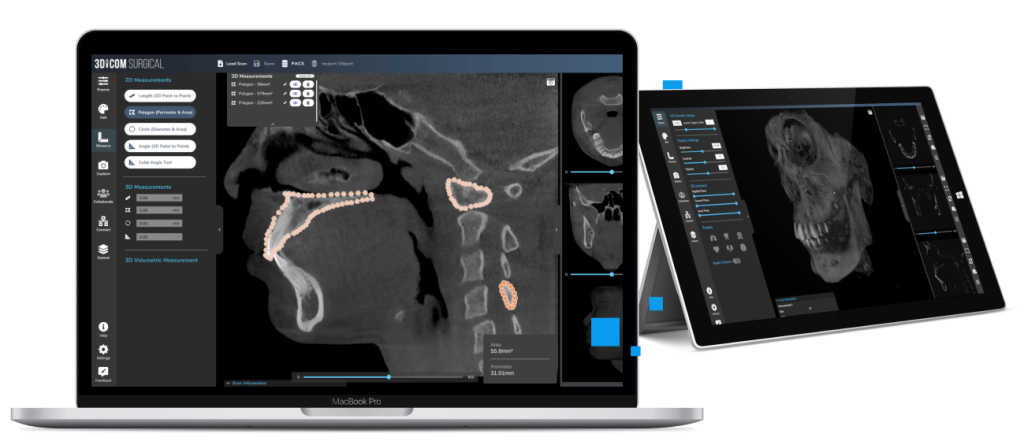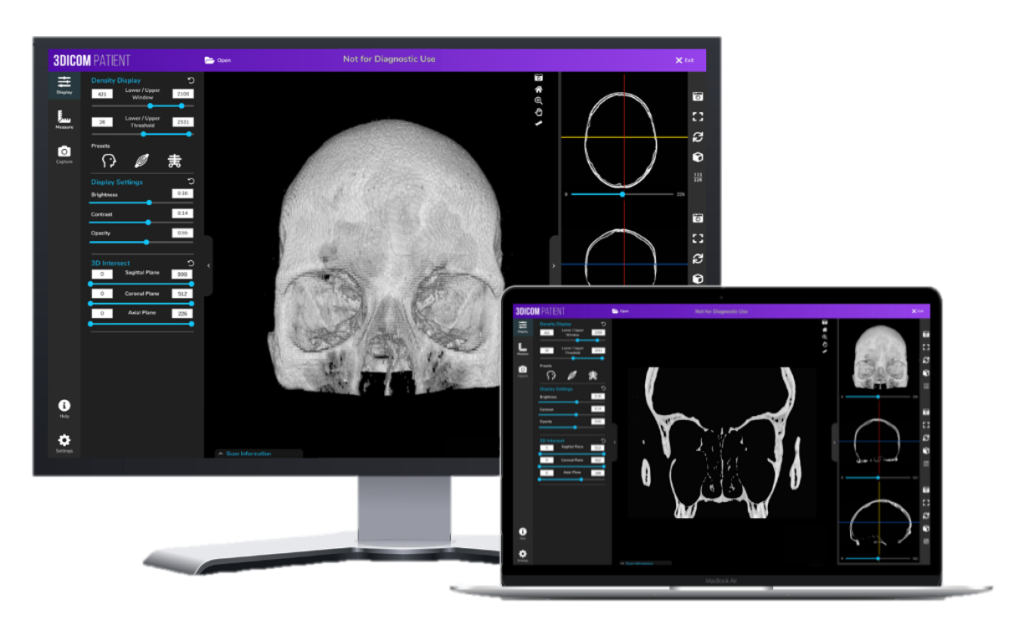3DICOM Spettatore
Aiutare pazienti, professionisti e ricercatori ad aggiungere un'altra dimensione all'imaging medico con un visualizzatore DICOM 3D completamente interattivo per scansioni TC, PET e MRI.
Disponibile su finestre, Mac OS, iOS, Androide e Realta virtuale
Il nostro visualizzatore DICOM combina funzionalità con Praticità sia su Windows che su Mac

In sviluppo dall'inizio del 2020, il software 3Dicom di Singular Health è un visualizzatore DICOM 3D a più livelli che consente il rendering rapido del volume di un'immagine medica 2D in un modello 3D completamente interattivo dell'anatomia specifica del paziente.
Tutte le funzionalità del software 3Dicom Viewer sono disponibili sia su Windows che su MacOS / OS X, il che consente all'utente finale di visualizzare i file DICOM con un'interfaccia utente coerente e intuitiva, tutto nello stesso programma.
Abbiamo ottimizzato un processo di rendering del volume 3D sul dispositivo per convertire i file DICOM da 2D a 3D in meno di 90 secondi in modo che i tuoi dati medici vengano elaborati in modo sicuro sul tuo dispositivo anziché nel cloud.
Sviluppato pensando a medici, chirurghi, radiologi e produttori di dispositivi medici, 3Dicom offre tutti gli strumenti standard di analisi delle immagini mediche come la ricostruzione multiplanare (MPR), le viste 2D standard e le finestre che troverai in altri visualizzatori dicom commerciali insieme a molto funzionalità più specifiche per ciascun utente finale.
Guarda il video per scoprire come stiamo aggiungendo un'altra dimensione alla radiologia
Layout intuitivo e Funzionalità potenti
Crediamo che a volte meno è di più.
Il software 3Dicom presenta un design modulare con strumenti comuni a tutti i livelli, come ad esempio:
- Ricostruzione Multiplanare (MPR) di dati DICOM
- Rendering rapido del volume 3D
- Visualizzazione interattiva con rotazione, panning e zoom immersivo per visualizzare all'interno del modello 3D
- Affetta l'anatomia 3D nei piani sagittale (da lato a lato), coronale (davanti a dietro) e assiale (dall'alto verso il basso).
Dare potere a pazienti e operatori attraverso la tecnologia
Sviluppata da Singular Health Group, la nostra tecnologia di imaging medico è progettata per realizzare la nostra visione di responsabilizzare pazienti e professionisti attraverso una tecnologia che consente un'assistenza sanitaria personalizzata.

Migliore comprensione del paziente

Creazione di modelli anatomici specifici per il paziente



